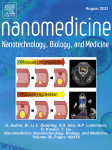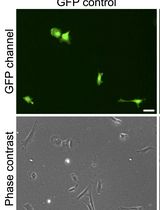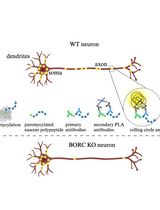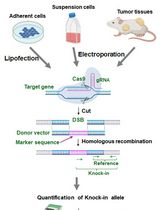- EN - English
- CN - 中文
Ex-vivo Skin Permeability Tests of Nanoparticles for Microscopy Imaging
用于显微成像的纳米粒子的离体皮肤渗透性测试
发布: 2022年04月05日第12卷第7期 DOI: 10.21769/BioProtoc.4375 浏览次数: 2239
评审: Karem A CourtEVANGELOS THEODOROULuis Alberto Sánchez Vargas
Abstract
Delivery of drugs through the skin is a major challenge in the field of drug delivery systems. Quantification of materials, and specifically nanoparticles, within the skin layers is essential for the development of advanced topical and transdermal delivery systems. We have developed a technique for ex-vivo segmentation and evaluation of human skin samples treated with fluorescent nanoparticles. The method is based on horizontal cryosections of skin samples, followed by confocal microscopy and image analysis. This protocol is relatively simple to perform with basic histological tools, thus it can serve for various dermatology assays.
Keywords: Horizontal cryosectioning (水平冷冻切片)Background
Penetration of nanoparticles through the skin, and specifically via hair follicles, have emerged as a potential delivery route for drugs. Nanoparticles can serve as carriers for drugs for topical treatments and systemic delivery, directed to the blood vessels at the hair bulb. Various types of nanoparticles were studied for follicular drug delivery, differing from each other by composing materials, size, and shapes (Costa et al., 2021; Patzelt and Lademann, 2013). While our method was developed with gold nanoparticles, this can be relevant for particles made of different materials, such as polystyrene, lipids, etc., and varied fluorescent labeling.
One of the most significant characterizations for follicular nanocarriers is the particles' penetration depth. Determination of penetration depth can be performed using several methods, for instance histology followed by confocal microscopy and tape striping (Escobar-Chávez et al., 2008; Lohan et al., 2017). In our manuscript (Friedman et al., 2021), we have studied the follicular penetration of fluorescently labeled gold nanoparticles, and the impact of particle shape on penetration depth. To assess the depth of penetration into human skin, we have developed a method for the incubation of skin samples with nanoparticles, and the sectioning of samples horizontally and vertically for further confocal microscopy analysis.
In the method detailed here, we are using human skin samples and polymeric nanoparticles with fluorescent labeling. Serial horizontal sectioning of the samples is performed for the evaluation and quantification of the particles in each section using confocal microscopy imaging.
Materials and Reagents
24-well cell-culture treated plate (ThermoFisher, catalog number: 142475)
Ethanol 70%
5 × 5 sterile gauze pads
8 × 8 mm Peel away embedding mold (Electron Microscopy Sciences, catalog number: 70180)
Superfrost Plus microscope slides (75 × 25 mm, Fisher Scientific, catalog number: 12-550-15)
Microscope cover glass (24 × 60 mm, Marienfeld, catalog number: 0101242)
Dulbecco′s Modified Eagle′s Medium, high glucose (DMEM) (Sigma-Aldrich, catalog number: D5796)
Dulbecco's-Phosphate-buffered saline (DPBS) (pH 6.7–7) (ThermoFisher, catalog number: 14200075)
Incubator 37°C, CO2 5% (ThermoFisher, Heracell 150i, catalog number: 50116048)
OCT compound (Scigen, catalog number: 4586)
Formaldehyde 35% (Bio-Lab, catalog number: 67505)
ImmEdge Hydrophobic Barrier PAP Pen (Vector Laboratories, catalog number: H-4000)
DAPI (Sigma-Aldrich, catalog number: D9542)
Fluoromount mounting medium (Sigma-Aldrich, catalog number: F4680)
Equipment
Dissecting scissors, 9.5 cm, straight (WPI, catalog number: 503244)
Dressing forceps, 12.5 cm, serrated (WPI, catalog number: 501217)
Tweezers
Small beaker
Cryostat (Leica CM1950)
Glass staining jar (Normax, supplied by Alexred, catalog number: NR 4431000)
Software
ImageJ freeware (http://rsbweb.nih.gov/ij/) – image analysis
Procedure
文章信息
版权信息
© 2022 The Authors; exclusive licensee Bio-protocol LLC.
如何引用
Friedman, N., Merims, S., Elia, J. and Benny, O. (2022). Ex-vivo Skin Permeability Tests of Nanoparticles for Microscopy Imaging. Bio-protocol 12(7): e4375. DOI: 10.21769/BioProtoc.4375.
分类
生物工程 > 生物医学工程
医学
生物科学 > 生物技术
您对这篇实验方法有问题吗?
在此处发布您的问题,我们将邀请本文作者来回答。同时,我们会将您的问题发布到Bio-protocol Exchange,以便寻求社区成员的帮助。
Share
Bluesky
X
Copy link













